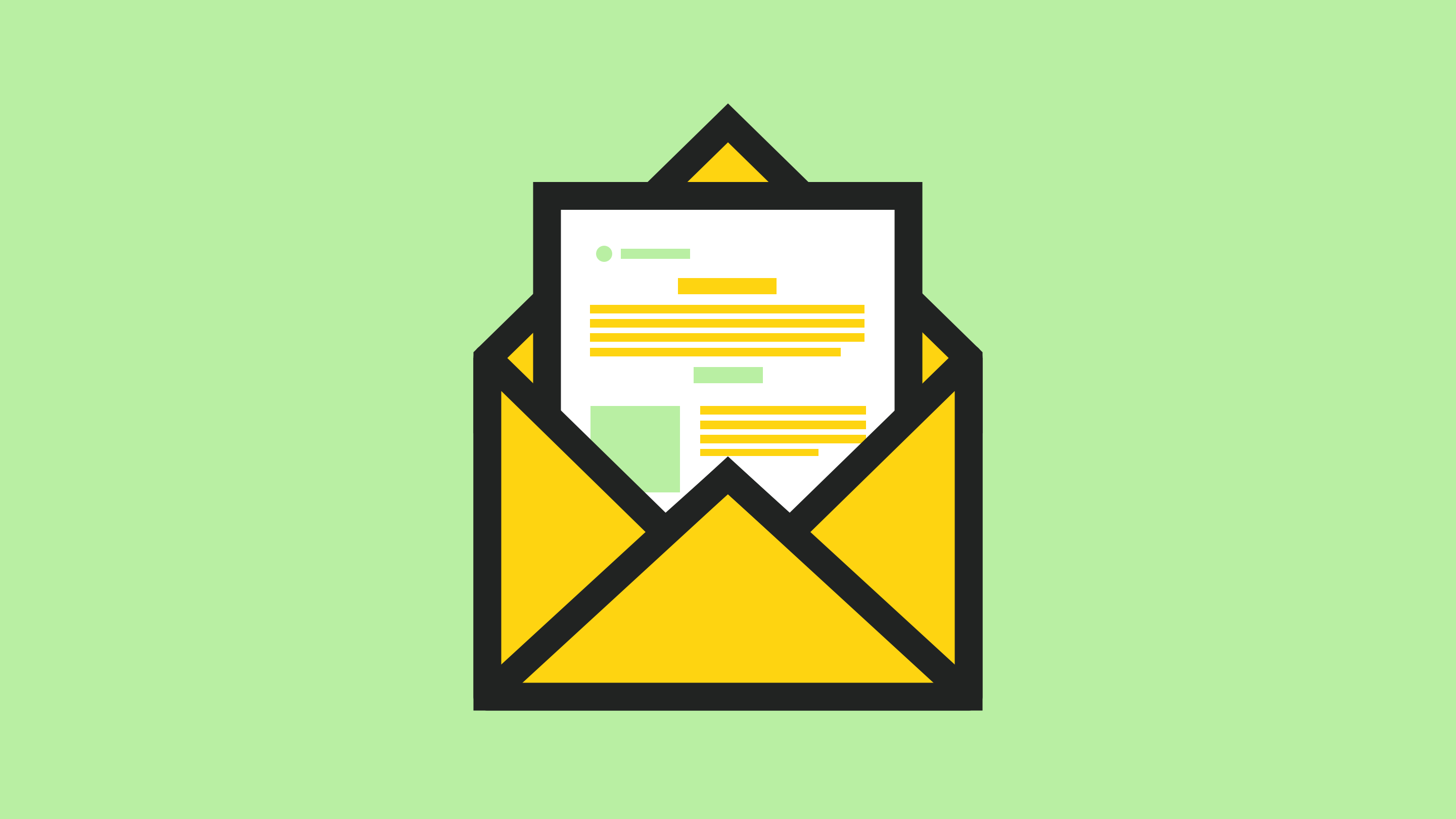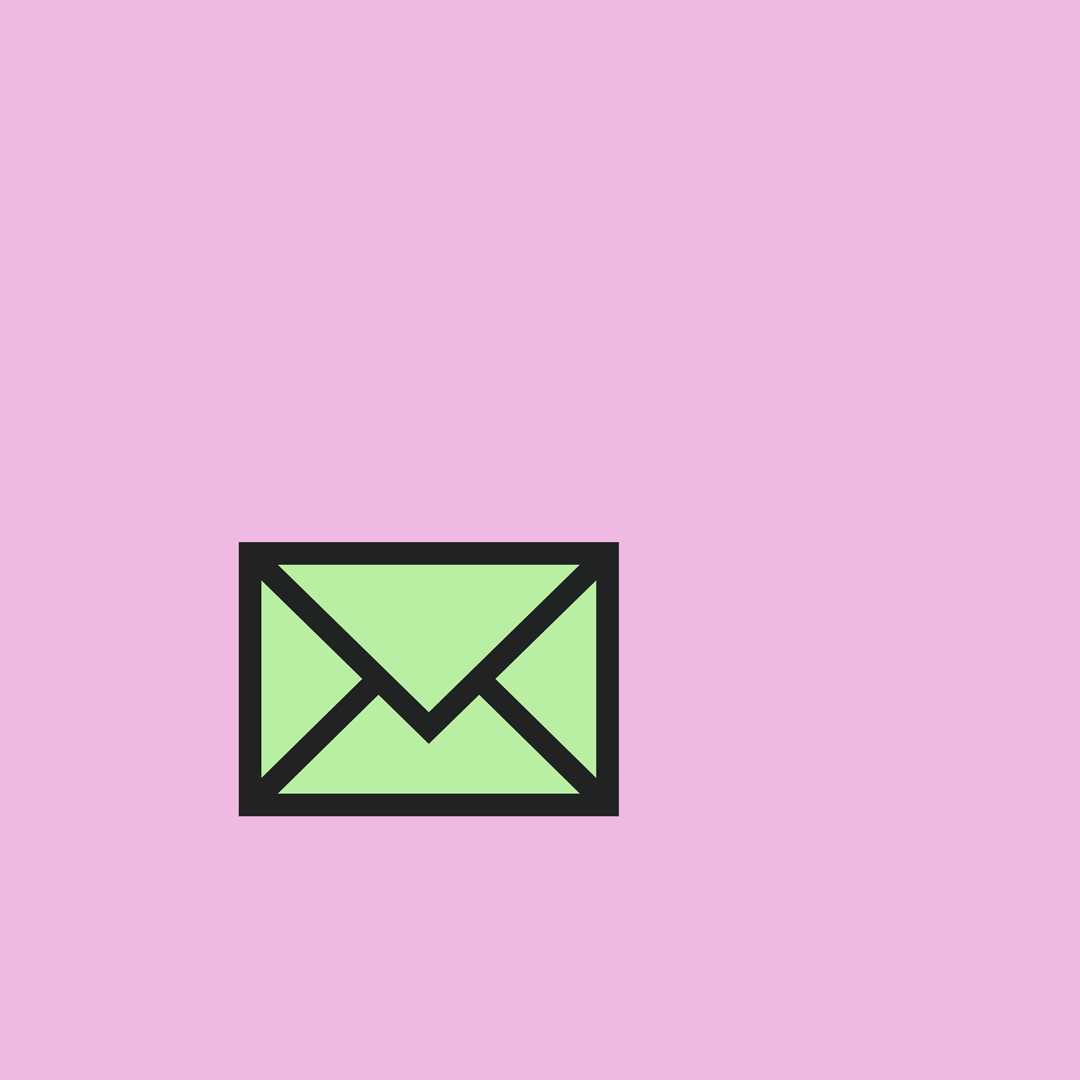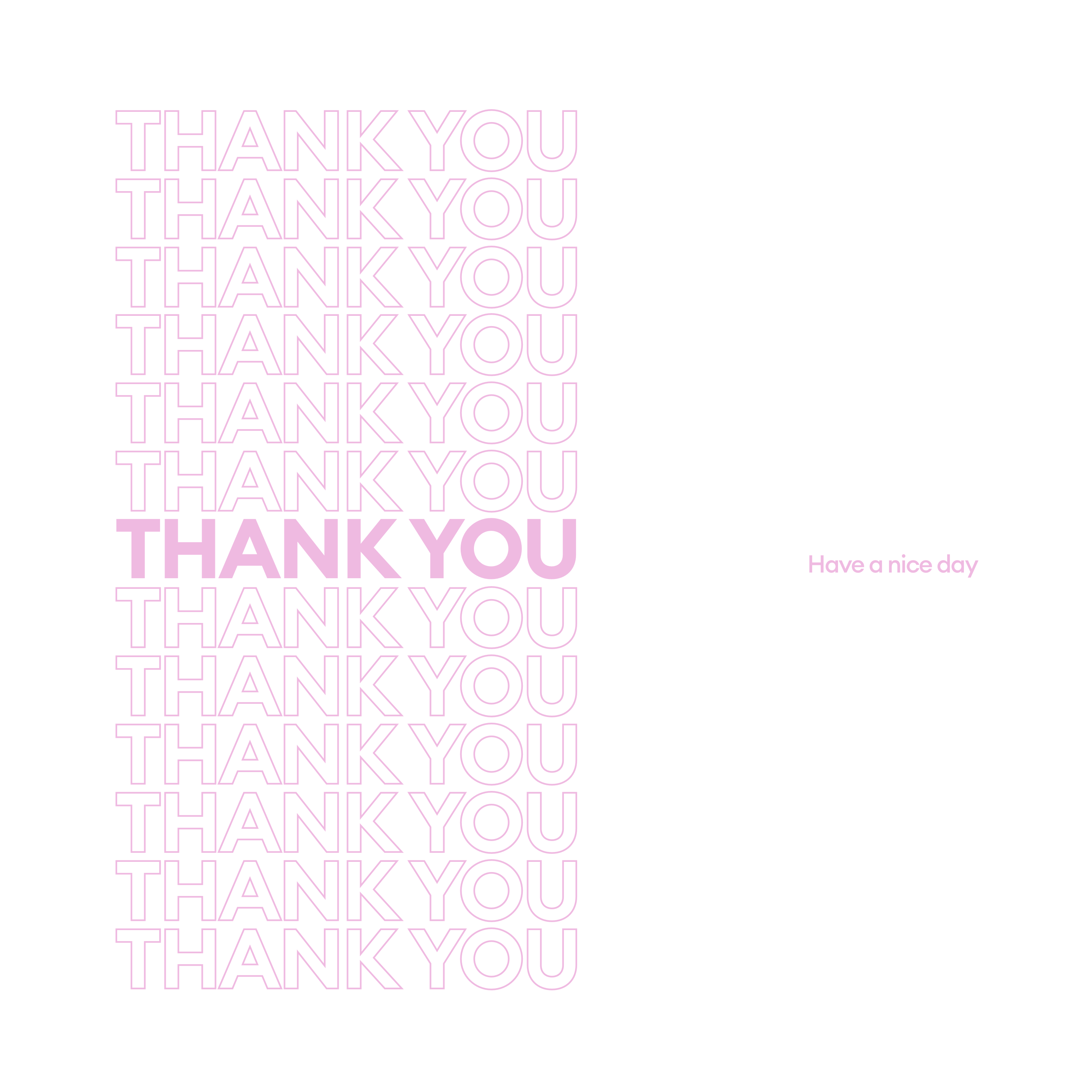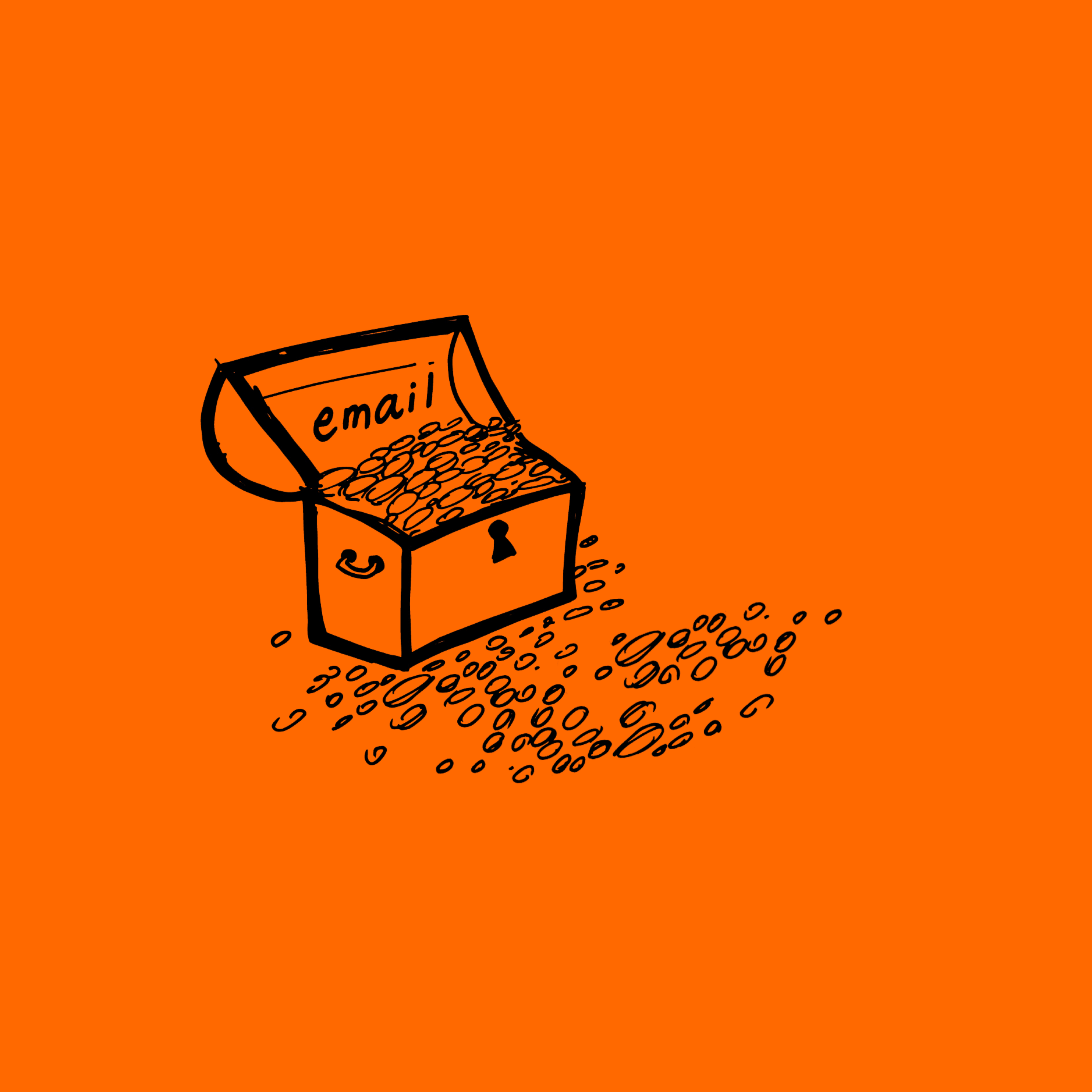You’ve got mail. From the accounting department, reminding you that you still don’t know how to do your expense report properly. From your mom, reminding you it’s her birthday. From Google, letting you know your meeting starts in 10 minutes so you better fix your hair and make sure you don’t have anything in your teeth and get a cup of coffee.
Sometimes your inbox isn’t your best friend. But every once in a while you scan your eyes through the list of subject lines and get a jolt of unexpected emotion. There’s a message from your favourite brand, with the pants that make our butt look 18 again. Or from your grocery delivery service that always has the best weekly deals on avocados. You move your hand slowly to your mouse. And then you press open. And inside: delight, surprise, maybe even joy. The culprit? A clever one-liner, an invitation to an upcoming event in your city, or a sentence that felt like it was written just for you and you alone.
Emails have the power to jump through the screen, pull at our heartstrings and coax us into taking action. They’re a digital mirage of words and images that can make us do things, like spend money. And as marketers, we have a duty to take every opportunity to earn the attention, the click, and the moment of human connection. So how do you craft a truly effective email campaign? We’ll tell you. Because we like seeing good emails in our inbox.
Topic and theme
Before you begin crafting copy or selecting images, you want to decide on the topic of your email. It should be focused on sharing something timely and new, or a pillar of your brand. It should also have a clear goal. Great email topics include: an upcoming event, the announcement of a new product or service, or a topic that gives your audience a deeper look into your brand—like an intro to your responsible product sourcing or an overview of your stellar customer service program. Really effective email programs follow an editorial calendar that aligns these topics with product drops, seasonal events and campaign goals.
Once you decide on a topic, pick a timely theme or story to help bring it to life. A theme could be new years resolutions, building community, or ethics in the fashion industry. Picking something that is related to the current events or seasonality can help your email feel more relevant to your audience and add a layer of storytelling to the message you want to get across.
The subject line
No pressure, but the subject line is a real make or break part of the email (cue the 8 Mile soundtrack). It’s the difference between getting a first date and a “Sorry, I’m busy.” You need to use every word like it’s your last, because it could be. Here are three things to consider when crafting an email subject line that actually works:
1. Why does this email matter? What is inside that your audience would be terribly sad to miss out on?
2. Who are you speaking to? What do they care about and what is relevant to them today?
3. How do you want your audience to feel?
Collectively, we’ve written somewhere between 600–10,000 email subject lines. (It’s a ballpark.) What we know is that people like new things, exclusive things, to know things before anyone else, and to laugh. We put together our top 10 email subject lines that arrived in our inbox this week to show you a stellar subject line in action. Tell us you wouldn’t click on these, given the chance.
1. Excuse me–did you forget something? [Reformation]
2. Inside the two years that shook Facebook—and the world [Wired]
3. 10,776,341 high sex drive days in 2017 [Clue]
4. If you love Le Creuset, you’ll love this [Purewow]
5. Attention LA: Raden Has Arrived. [Raden]
6. Special Class for you this Sat, Feb 10th [Semperviva Yoga]
7. Cute dog inside [Vitruvi]
8. Introducing Patagonia Action Works [Patagonia]
9. 4 Spots Left For Eat, Pray, Love, Yoga [Gloria Latham]
10. The beginner’s guide to cannabis [well+good]
The reason these subject lines work is because they’re giving you something new, exciting, or different. They’re speaking directly to you, and they’re overtly sharing the value of what’s waiting for you inside. They’re also the right length. Forty characters is the max you want to go before your sentence gets cut off. Each has a sense of urgency and directness that you can’t ignore, but don’t feel annoyed by. It’s a fine line to walk, but we believe in you.
The headline
Remember when we told you the subject line was a make or break? The headline is your next moment to live or die. Surprise! Each line of copy in an email campaign has a purpose: to get you to read the next line of copy. It’s like word dominos.
While subject lines should be a teaser to what’s inside your email, headlines should tell you exactly what the email is about. It can be done in a clever or unexpected way, but clarity should come first.
The body copy
John Mayer might think your body is a wonderland, but we think your body copy is the place for brevity. We are scanners—every one of us. So use subheaders to get your most important pieces of information out, and for the people who want to know more, your body copy can dive in a little deeper. Always communicate specifics over generalities, like: “Our darkest denim is triple-washed so keep its saturated hue wear after wear” versus “Made in our darkest denim.”
The call to action
It’s not a chill name for something, so take it seriously. You are asking someone to do something for you here—so being clear matters. Do you want your boyfriend to pick up kalamata olives for your Greek salad, or just any old olives? Specific directions yield better results. Tell people where they’re going to go when they click the button. It could be a page on your website. It could be your blog. It could be the International Space Station (just kidding, CTAs don’t do that…yet). But it needs to make sense with the context of the rest of your email and it needs to be tied to a goal.
Your CTA is the reason for the rest of the email. It’s great to have someone know about your new spring clothing line, but it’s even better when they click through and buy four new things for themselves.
Like your best retail salesperson, your CTA needs impeccable timing, thoughtfulness, and care. It’s the one thing standing between you and a sale.
The footer
You can break the rules a little bit at the bottom of your email. It’s okay to deviate from the main topic of the email here. Maybe you’re offering free shipping for the weekend, or maybe you have a couple new blog posts you want to share with your audience that don’t merit a full email of their own.
You can use the footer to share a different message—but contain the copy and photography in a distinctly separate module, so it’s clear the main theme or topic of the email is wrapped up. If you can, tie an element of the main email topic to the footer, so if you’re announcing your new t-shirt line, and your footer is going to speak to free shipping, than you could say: “Try on your tees for free—shipping is on us until Sunday.”
Analytics
If you don’t track your email analytics, you’re nuts. There is a GOLDMINE of data in there waiting to be discovered. Deep, dark insights about thousands of real people who exist in the real world, and who can be the difference between you making your quarterly sales goal or not. They could be lifelong fans of your brand. So get to know them, intimately. Pay attention to what emails they’re opening, where they’re clicking, and where they’re going after they click. They’re trying to send you a message. Learn from their actions and tweak future campaigns to match what they’re responding to.
There. You’re set to craft an impeccable email campaign. Go forth and share your timely, new, and brand-propelling messages with your subscribers. Bring a smile to their face, entice them to click, and most importantly, remind them that good, non-accounting-related things come to their inbox once in a while.







